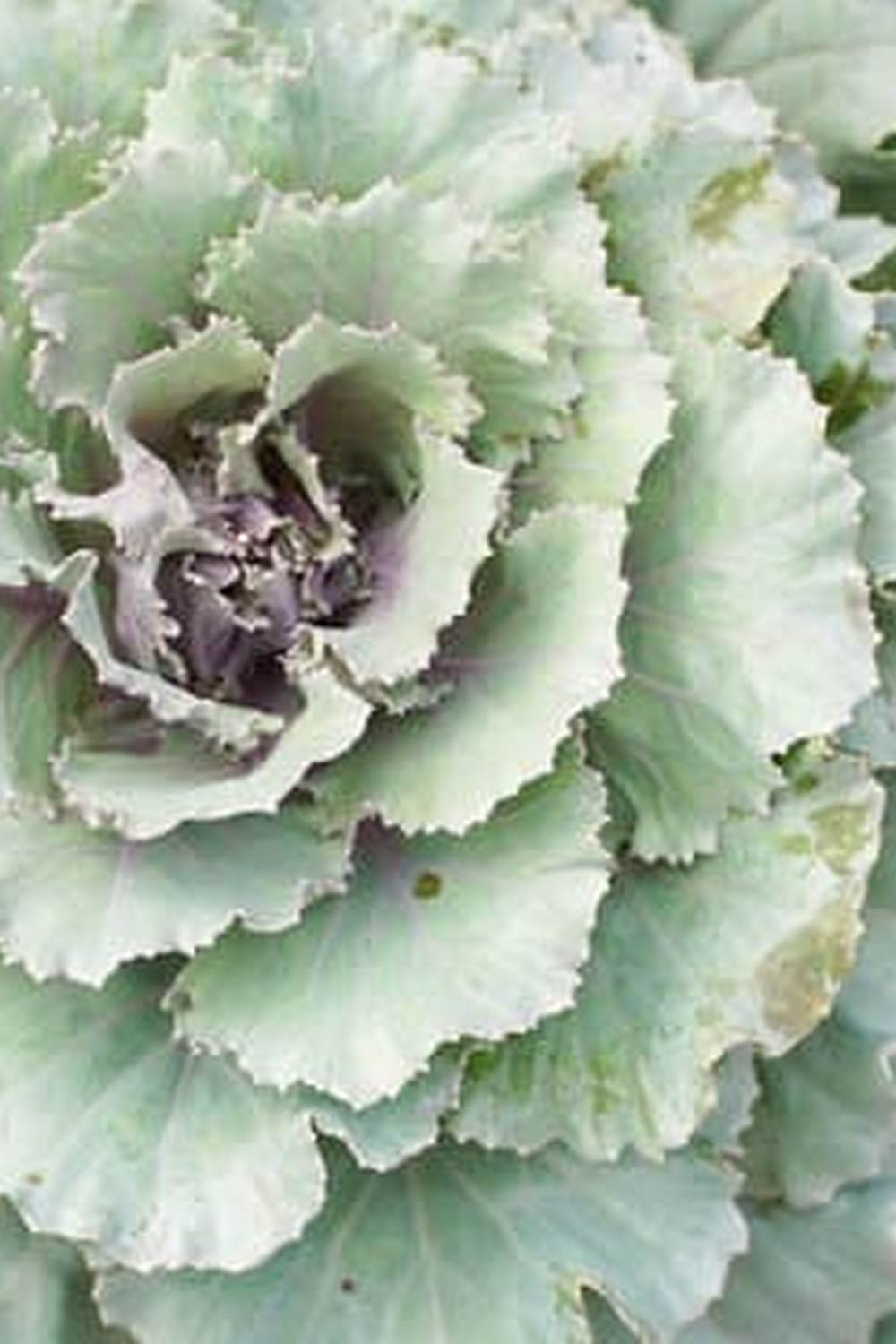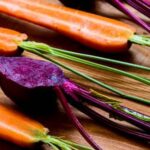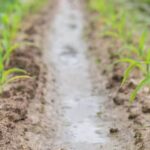Embarking on the journey of fruit & vegetable gardening is not only a rewarding experience but also a sustainable way to enjoy fresh produce right from your backyard. Whether you are a seasoned gardener or just starting out, cultivating your own fruits and vegetables can be a fulfilling and enjoyable endeavor.
Growing your own produce comes with a myriad of benefits beyond just the joy of harvesting your own fruits and vegetables. It allows you to have control over what goes into your food, ensuring that it is free from harmful chemicals. Additionally, gardening can be a therapeutic activity that helps reduce stress and promotes overall well-being.
Before you start planting, it is essential to plan your fruit & vegetable garden meticulously, considering factors such as location, size, and layout. These elements play a crucial role in the success of your garden. By selecting the right spot with adequate sunlight and drainage, choosing the correct size based on your needs, and designing an efficient layout for easy access and maintenance, you are setting yourself up for a flourishing garden full of delicious produce.
Benefits of Growing Your Own Produce
Growing your own fruits and vegetables has numerous benefits that go beyond just having a fresh supply of produce at your fingertips. Here are some reasons why fruit & vegetable gardening can be a rewarding endeavor:
- Health Benefits: By growing your own fruits and vegetables, you have control over how they are grown and what chemicals, if any, are used. This means you can ensure that your produce is free from harmful pesticides and chemicals, making it healthier for you and your family to consume.
- Cost Savings: Once you have set up your fruit & vegetable garden, the cost of seeds or seedlings is often minimal compared to the amount of produce you can harvest throughout the season. This can lead to significant savings on your grocery bills, especially during peak harvest times when produce prices can be high.
- Taste and Quality: There is nothing quite like eating a ripe tomato or sweet strawberry straight from the vine. The flavor of homegrown fruits and vegetables is often far superior to store-bought produce that may have been picked before it fully ripened in order to withstand transportation.
In addition to these benefits, fruit & vegetable gardening also provides an opportunity for physical activity, stress relief, and connecting with nature. Whether you have a large backyard or just a small balcony, anyone can experience the joys of planting, tending to, and harvesting their own fresh fruits and vegetables. So why not give it a try and start reaping the rewards of growing your own food?
Planning Your Fruit & Vegetable Garden
Choosing the Right Location
One of the first steps in planning your fruit and vegetable garden is selecting the right location. Most fruits and vegetables require at least 6-8 hours of sunlight per day, so choose a spot in your yard that receives adequate sunlight. Additionally, make sure the location has access to water for irrigation purposes. It’s also important to consider factors such as soil quality and drainage when deciding on a location for your garden.
Determining the Size of Your Garden
The size of your fruit and vegetable garden will depend on several factors including the amount of available space, the types of produce you want to grow, and how much time you can dedicate to gardening. Start small if you are a beginner gardener and gradually expand as you gain experience. Consider creating raised beds or container gardens if you have limited space but still want to grow a variety of fruits and vegetables.
Designing Your Garden Layout
When planning the layout of your fruit and vegetable garden, consider grouping plants with similar watering needs together. This will make it easier for you to provide proper care for each type of plant. You may also want to include pathways between rows of plants for easy access during planting, weeding, and harvesting.
Be sure to leave enough space between plants to allow for proper air circulation and growth without overcrowding. Experiment with different layouts to see what works best for your specific gardening needs.
Essential Tools and Supplies for Fruit & Vegetable Gardening
When it comes to fruit & vegetable gardening, having the right tools and supplies can make all the difference in the success of your garden. From planting to harvesting, there are several essential items that every gardener should have on hand.
Garden Tools
One of the most important things you’ll need for fruit & vegetable gardening is a set of high-quality garden tools. This includes a durable trowel for planting and transplanting, a sturdy rake for leveling soil and removing debris, and a sharp pair of pruners for trimming plants and harvesting produce. Additionally, having a watering can or hose with a nozzle attachment is crucial for providing your plants with the water they need to thrive.
Protective Gear
In addition to tools, it’s important to have the right protective gear when working in your garden. This includes gloves to protect your hands from thorns and rough surfaces, a wide-brimmed hat to shield your face from the sun, and sturdy footwear to keep your feet comfortable while working outdoors.
Depending on your location and the types of plants you’re growing, you may also need knee pads or a kneeling mat to reduce strain on your joints while tending to your garden.
Plant Support Systems
For certain fruits and vegetables, like tomatoes or climbing beans, having plant support systems in place is essential. This can include trellises, stakes, cages, or arbors that provide structural support for vertical growth or heavy fruit production. By investing in these plant support systems early on in your gardening journey, you can help prevent damage to plants and ensure a bountiful harvest later in the season.
Choosing the Right Fruits and Vegetables for Your Garden
When it comes to fruit & vegetable gardening, one of the most important decisions you’ll make is choosing the right fruits and vegetables for your garden. Whether you’re a beginner or an experienced gardener, selecting the plants that work best for your climate, soil, and available space is crucial for a successful harvest.
A key factor to consider when choosing what to grow in your garden is your local climate. Different fruits and vegetables thrive in varying temperatures and sunlight conditions. For example, tomatoes and peppers love warm weather and plenty of sunshine, while leafy greens like lettuce and spinach prefer cooler temperatures. Researching which plants are best suited for your region can help ensure a bountiful harvest.
Another consideration when selecting fruits and vegetables for your garden is the amount of space you have available. Some plants, such as squash and melons, require more room to spread out, while others like herbs or cherry tomatoes can thrive in containers on a patio or balcony. Planning out the layout of your garden based on the space you have can help maximize productivity and efficiency.
| Types of Plants | Preferred Growing Conditions |
|---|---|
| Tomatoes | Warm weather, full sun |
| Lettuce | Cool temperatures, partial shade |
| Zucchini | Plenty of space to spread out |
In addition to climate and space considerations, it’s essential to choose fruits and vegetables that you and your family enjoy eating. Planting crops that you love will not only motivate you to maintain your garden but also ensure that you get to savor the delicious rewards once they’re ready for harvest.
Whether you opt for easy-to-grow favorites like strawberries or experiment with more exotic varieties like heirloom tomatoes or Japanese eggplants, selecting plants that align with your tastes will make the gardening experience even more rewarding.
Soil Preparation and Composting for a Thriving Garden
When it comes to fruit & vegetable gardening, the quality of your soil plays a crucial role in the success of your garden. Before you start planting, it’s essential to prepare the soil properly to provide a healthy environment for your plants to thrive. One effective way to improve soil fertility and structure is through composting. Composting not only enriches the soil with essential nutrients but also helps retain moisture and promote good drainage.
Here are some key steps to prepare your soil and incorporate compost into your garden:
- Test your soil: Before adding any amendments, test your soil to determine its pH level and nutrient content. This will help you understand what specific nutrients your plants may need.
- Amend the soil: Based on the results of your soil test, add organic matter such as compost, well-rotted manure, or peat moss to improve the overall quality of the soil.
- Turn the soil: Use a shovel or garden fork to mix in the amendments thoroughly. Turning over the soil helps aerate it, allowing better water infiltration and root growth.
Composting is an eco-friendly way to recycle kitchen scraps and yard waste while creating nutrient-rich humus for your garden. By building a compost pile with a mixture of brown materials (like leaves or straw) and green materials (such as fruit peels or grass clippings), you can produce a valuable amendment that enhances soil fertility naturally.
- Create a compost pile: Choose a suitable location in your garden for a compost bin or pile where it can decompose undisturbed.
- Add layers: Alternate between brown and green materials as you build up your compost pile. Keep it moist but not soggy, and turn it regularly to promote decomposition.
- Patiently wait: Depending on environmental conditions and how actively you manage the compost pile, you can expect rich humus ready for use in as little as several months.
By incorporating proper soil preparation techniques and integrating composting practices into your fruit & vegetable gardening routine, you are setting the stage for a flourishing garden that yields bountiful harvests throughout the growing season. Remember that healthy plants require healthy soils, so investing time and effort into preparing favorable growing conditions will pay off in delicious fruits and vegetables for you to enjoy.
Pest Control and Disease Prevention in Fruit & Vegetable Gardening
When it comes to fruit & vegetable gardening, one of the key challenges that gardeners face is dealing with pests and diseases that can wreak havoc on their plants. However, with the right strategies and preventive measures, you can keep your garden healthy and thriving.
One effective way to prevent pests and diseases is by practicing crop rotation. By alternating the types of fruits and vegetables you plant in different areas of your garden each season, you can help disrupt the life cycles of pests and reduce the risk of disease buildup in the soil.
Another important aspect of pest control in fruit & vegetable gardening is proper plant spacing. Crowded plants not only compete for nutrients and sunlight but also create a favorable environment for pests and diseases to spread easily. By giving your plants enough space to grow and ensuring good air circulation, you can help decrease the likelihood of infestations. Additionally, keeping your garden clean by removing debris, fallen fruits, and weeds can also prevent pests from finding hiding spots and breeding grounds.
In terms of disease prevention, using disease-resistant varieties of fruits and vegetables can be a proactive approach to safeguarding your garden. These varieties have been specifically bred to have built-in resistance to common diseases, reducing the need for chemical interventions.
It’s also essential to monitor your plants regularly for any signs of disease or pest infestations so that you can take action promptly. By being observant and vigilant, you can address issues before they escalate and maintain a thriving fruit & vegetable garden throughout the growing season.
| Pests & Diseases Prevention Strategies | Benefits |
|---|---|
| Crop rotation | Disrupts pest life cycles |
| Proper plant spacing | Prevents spread of diseases |
| Use of disease-resistant varieties | Reduces chemical interventions |
Harvesting and Enjoying the Fruits of Your Labor
When it comes to harvesting your fruits and vegetables, timing is crucial. Different crops have different peak harvesting times, so it’s essential to keep a close eye on your garden to ensure that you pick your produce at the right moment.
For example, tomatoes should be harvested when they are fully colored but still firm, while leafy greens like lettuce are best picked when they are young and tender. By paying attention to these details, you can maximize the flavor and nutritional value of your harvest.
After harvesting your fruits and vegetables, take the time to savor and enjoy them in various ways. Whether you incorporate them into fresh salads, hearty stews, or flavorful stir-fries, there is no shortage of delicious recipes that highlight the bounty of your garden.
You can also preserve your harvest by canning, freezing, or drying certain fruits and vegetables to enjoy them throughout the year. Ultimately, the joy of growing your own food extends beyond just the act of gardening – it extends to the pleasure of nourishing yourself and your loved ones with wholesome produce straight from your backyard.
Tips for Beginner Fruit & Vegetable Gardeners
For individuals new to the world of fruit and vegetable gardening, there are several tips and tricks that can help you navigate this rewarding journey. One key tip for beginners is to start small. It can be overwhelming to cultivate a large garden right from the beginning, so begin with just a few plants or vegetables that you enjoy eating. This will allow you to gain valuable experience without feeling pressured by a large-scale project.
Additionally, it is important for beginner fruit and vegetable gardeners to do their research. Different fruits and vegetables have varying requirements when it comes to sunlight, soil, and watering. Take the time to understand what each plant needs in order to thrive so that you can provide the best care possible. Consider investing in a good gardening book or seeking advice from experienced gardeners in your community.
Another helpful tip for beginners is to stay patient and resilient. Gardening is a learning process, and it may take some trial and error before you find what works best for your plants.
Don’t get discouraged by setbacks such as pests or diseases – view them as opportunities to learn and improve your skills as a gardener. Remember that the joy of growing your own food comes not just from the harvest, but also from the journey of nurturing your plants along the way.
Conclusion
In conclusion, fruit & vegetable gardening is a fulfilling and rewarding activity that not only provides you with fresh and delicious produce but also offers numerous health benefits, stress relief, and a deeper connection to nature. By growing your own fruits and vegetables, you have the opportunity to savor the flavors of homegrown goodness while knowing exactly where your food comes from and how it was cultivated.
The sense of accomplishment that comes from nurturing plants from seed to harvest is unmatched.
Moreover, having a fruit & vegetable garden allows you to reduce your carbon footprint by minimizing transportation emissions associated with store-bought produce. Additionally, you can save money in the long run by growing your own food at home. Whether you have limited space in a small backyard or ample room in a larger plot, there are endless possibilities for creating a thriving garden that suits your needs and preferences.
As you embark on your fruit & vegetable gardening journey, remember to start small and gradually expand your garden as you gain experience and confidence. Don’t be discouraged by setbacks or challenges – every gardener faces obstacles along the way.
With patience, dedication, and a willingness to learn from both successes and failures, you will soon find yourself enjoying the bountiful harvests of your labor. So roll up your sleeves, get your hands dirty, and embrace the joy of growing your own food through fruit & vegetable gardening.
Frequently Asked Questions
What Fruits and Vegetables Can Be Planted Together?
Certain fruits and vegetables can be planted together to maximize space and resources. For example, tomatoes, basil, and onions are known to complement each other when planted in close proximity. Pairing plants that have similar water and sunlight needs can also lead to a successful harvest.
What Are the Easiest Vegetables and Fruit to Grow?
When it comes to easy-to-grow vegetables, options like lettuce, radishes, and green beans are great choices for beginners. These crops generally require minimal maintenance and grow relatively quickly. As for fruit, strawberries are often recommended for their resilience and productivity in home gardens.
How Do I Start a Fruit and Vegetable Garden?
Starting a fruit and vegetable garden involves several key steps. Begin by selecting a suitable location with adequate sunlight and access to water. Prepare the soil by adding compost or fertilizer to ensure nutrient-rich growing conditions.
Choose plants that thrive in your climate zone and consider starting with seedlings for quicker results. Regular watering, weeding, and monitoring for pests are essential tasks to maintain a healthy garden throughout the growing season.

If you’re looking to get into vegetable gardening, or are just looking for some tips on how to make your current garden better, then you’ve come to the right place! My name is Ethel and I have been gardening for years. In this blog, I’m going to share with you some of my best tips on how to create a successful vegetable garden.





